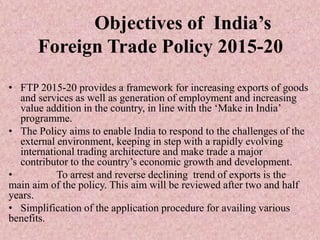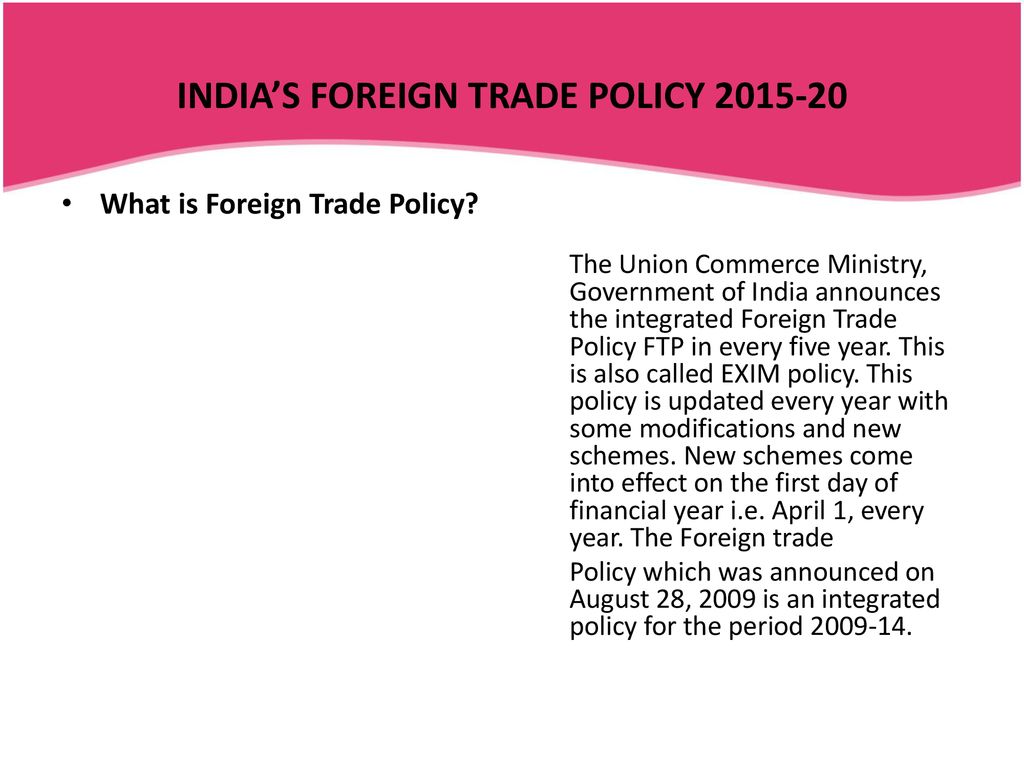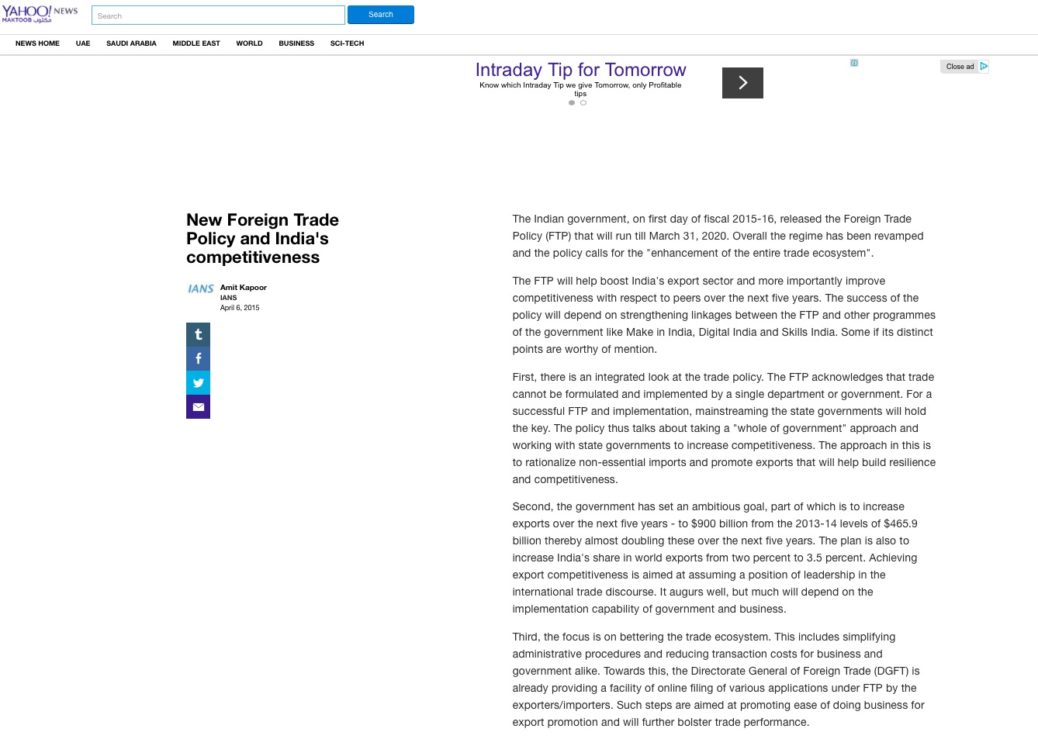India's foreign trade policy is an important aspect of the country's economic development and growth. The policy is designed to promote the exports of Indian goods and services, while also regulating the import of foreign goods and services into the country.
One of the main goals of India's foreign trade policy is to increase the country's export competitiveness in the global market. To achieve this, the government has implemented a number of measures, such as providing financial incentives and assistance to exporters, establishing export promotion councils, and implementing export-oriented policies.
In addition to promoting exports, India's foreign trade policy also aims to regulate the import of foreign goods and services into the country. This is done through the use of tariffs, duties, and other measures, which are used to protect domestic industries from foreign competition and to encourage the development of domestic production.
India's foreign trade policy is also focused on increasing the country's access to foreign markets. To achieve this, the government has entered into a number of trade agreements with other countries, which have helped to open up new markets for Indian goods and services.
In recent years, India's foreign trade policy has also focused on the promotion of sustainable and inclusive growth. This has included measures to encourage the development of small and medium-sized enterprises, as well as efforts to support the growth of disadvantaged and marginalized communities.
Overall, India's foreign trade policy plays a crucial role in the country's economic development and growth. By promoting exports, regulating imports, and increasing access to foreign markets, the policy helps to create new opportunities for Indian businesses and to drive economic growth.









